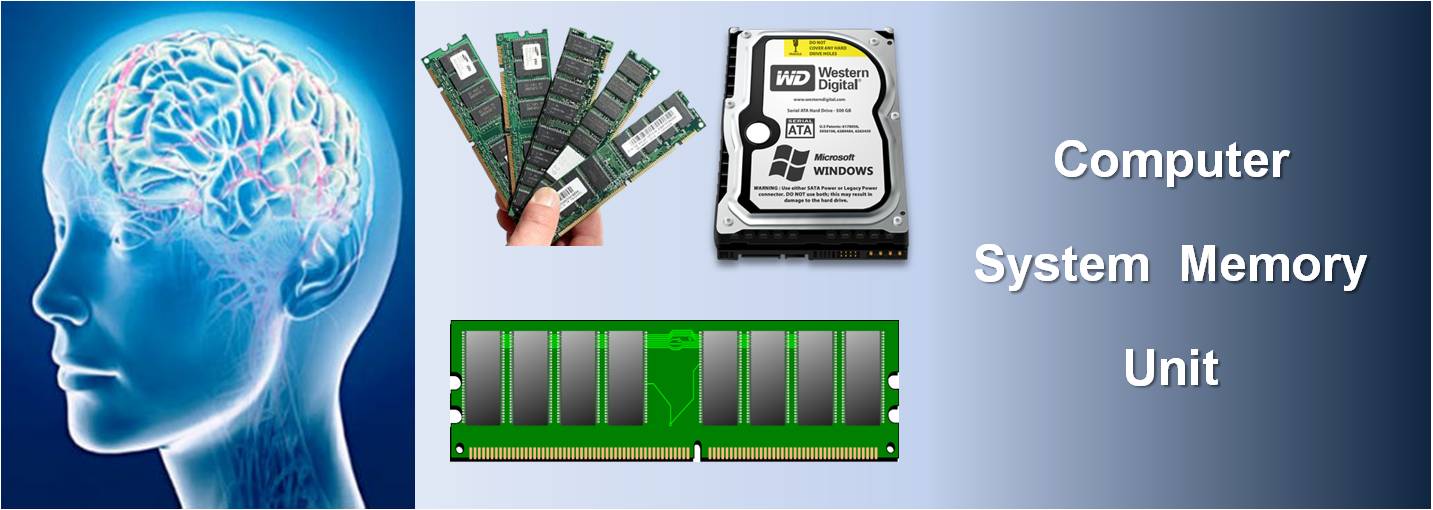Computer Memory,RAM,ROM,Dynamic RAM,Primary Memory.
For All User. Memory of Computer
Computer memory is any physical Device equipped for putting away data briefly, similar to RAM (random access memory), or for all time, similar to ROM (read-only memory). Memory gadgets use coordinated circuits and are utilized by operating systems, programming, and equipment.
RAM is a Primary Memory.
ROM/Hard Disk Is a Secondary Memory.

When you consider it, it's astounding what number of various types of electronic memory you experience in every day life. A considerable lot of them have become a fundamental piece of our jargon:

RAM
ROM
Store
Dynamic RAM
Static RAM
Streak memory
Memory Sticks
Virtual memory
Video memory
The entirety of the segments in your computer, for example, the CPU, the hard drive and the operating system, cooperate as a group, and memory is one of the most basic pieces of this group. From the minute you turn your computer on until the time you shut it down, your CPU is always utilizing memory. How about we investigate a run of the mill situation:
You turn the computer on:-
The computer loads information from Read-only memory (ROM) and plays out a power-on self-test (POST) to ensure all the significant parts are working appropriately. As a major aspect of this test, the memory controller checks the entirety of the memory addresses with a brisk read/compose activity to guarantee that there are no blunders in the memory chips. Peruse/compose implies that information is kept in touch with a piece and afterward read from that bit.
The computer stacks the basic input/output system (BIOS) from ROM. The BIOS gives the most fundamental data about storage gadgets, boot grouping, security, Plug and Play (auto gadget acknowledgment) capacity and a couple of different things.
The computer stacks the operating system (OS) from the hard crash into the system's RAM. By and large, the basic pieces of the operating system are kept up in RAM as long as the computer is on. This enables the CPU to have quick access to the operating system, which upgrades the exhibition and usefulness of the general system.
When you open an application, it is stacked into RAM. To ration RAM utilization, numerous applications load just the basic pieces of the program at first and afterward load different pieces varying.
After an application is stacked, any documents that are opened for use in that application are stacked into RAM.
When you spare a document and close the application, the record is kept in touch with the predefined storage gadget, and afterward it and the application are cleansed from RAM.
Types of memory
There are a few types of memory for computers. They are recorded beneath.
ROM :-ROM is isolated into three classifications:
PROM
EPROM
EEPROM

RAM :-There are six types of RAM:
EDO RAM
SDRAM
DDR RAM
DDR2 RAM
DDR3 RAM
DDR4 RAM
These types of memory all fall into the general classifications of SIMM or DIMM.
SIMM :-Single in Line Memory Module
DIMM:-Double in Line Memory Module
Unstable versus non-unpredictable memory
Memory can be either unstable and non-unpredictable memory. Unstable memory will be memory that loses its substance when the computer or equipment gadget loses control. Computer RAM is a case of unpredictable memory. It is the reason if your computer freezes or reboots when taking a shot at a program, you lose whatever hasn't been spared. Non-unpredictable memory, some of the time contracted as NVRAM, is memory that keeps its substance regardless of whether the power is lost. EPROM is a case of non-unpredictable memory.

Memory isn't circle storage
Storage /Memory:-
It is extremely basic for new computer clients to be befuddled by what parts in the computer are memory. Albeit both the hard drive and RAM are memory, it's increasingly suitable to allude to RAM as "memory" or "essential memory" and a hard drive as "storage" or "optional storage."
Comments